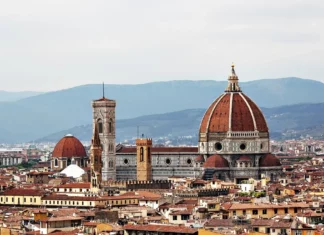Museum of Palazzo Davanzati
8:15-13:50 Tue-Wed-Thu / 13:15-18:50 Fri-Sat / Sundays and Mondays closed
The Museum of Palazzo Davanzati reopens after six months of refurbishing works and now houses a whole different exhibition. Some of the novelties include the exhibition of the three-century-old Coperta Guicciardini (a textile work of art), a precious and restored armoury, and the new room dedicated to ancient lace pieces, that boasts one of the richest collections in Italy.
Palazzo Davanzati, also known as the Museum of the Historic Florentine House (Museo della Casa Fiorentina Antica), was inaugurated as a state museum in 1956. It is now part of the complex of Musei del Bargello.
Originally home to the Davizzi, a wealthy family of merchants and bankers, this fourteenth-century palazzo and its impressive façade look out over the adjacent piazza, once populated by medieval case-torri (tower houses). Constructed in the mid 1300s, Palazzo Davanzati is in fact a mix of these case-torri and other properties belonging to the Davizzi, though it takes its name from another family, the Davanzati, who purchased the building in the late sixteenth century. (Today, the large coat of arms that adorns the façade is the Davanzati’s family crest, added when they acquired the property in 1578.) The Davanzati inhabited the palazzo until 1838, the year of the tragic death of the family’s last heir, Carlo.
In 1904, Palazzo Davanzati was purchased by the antiquarian Elia Volpi, who inaugurated it as the Museo della Casa Fiorentina Antica in 1910. Deeming the building a stunning example of the then much sought “Florentine” taste, Volpi furnished the house with a mixture of antiques that corresponded to his vision of a noble medieval residence. Palazzo Davanzati was reopened as a public museum in 1956, though it retained much of its former character as a reimagination of the medieval Florentine house. Nowadays, Palazzo Davanzati houses a diverse collection of sculptures, paintings, furniture, ceramics, lace, and historic objects of daily use.



